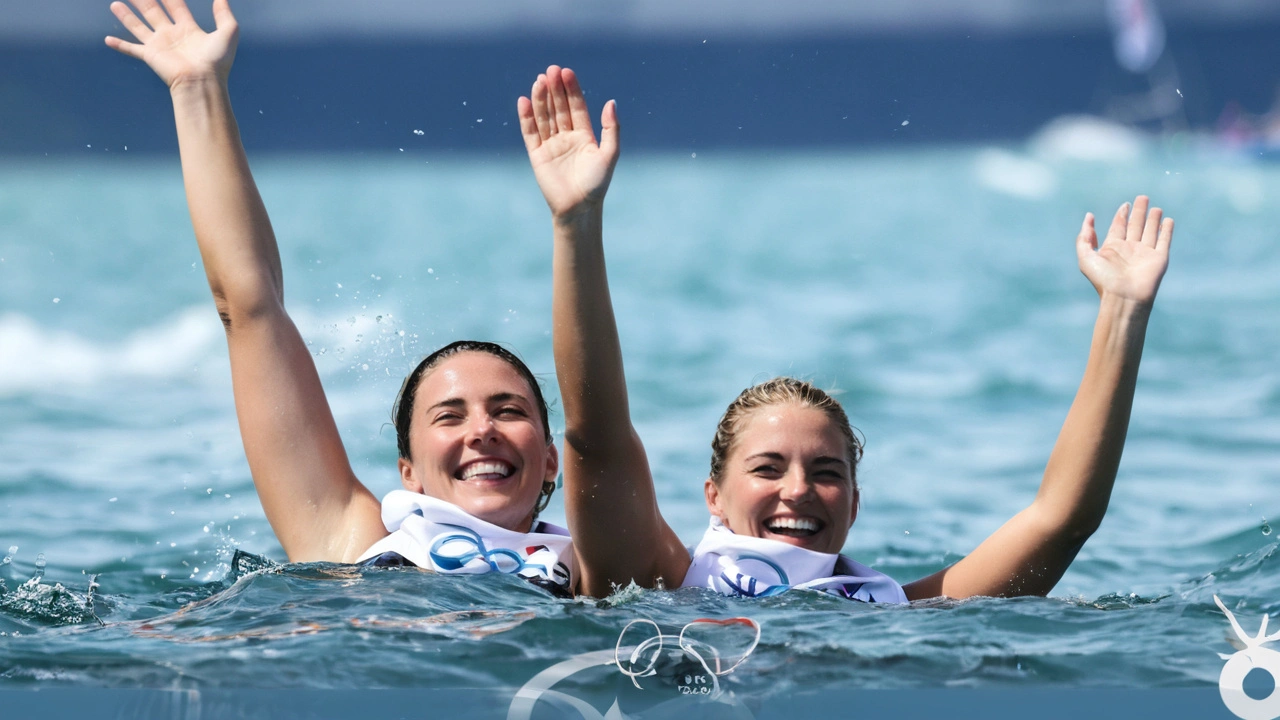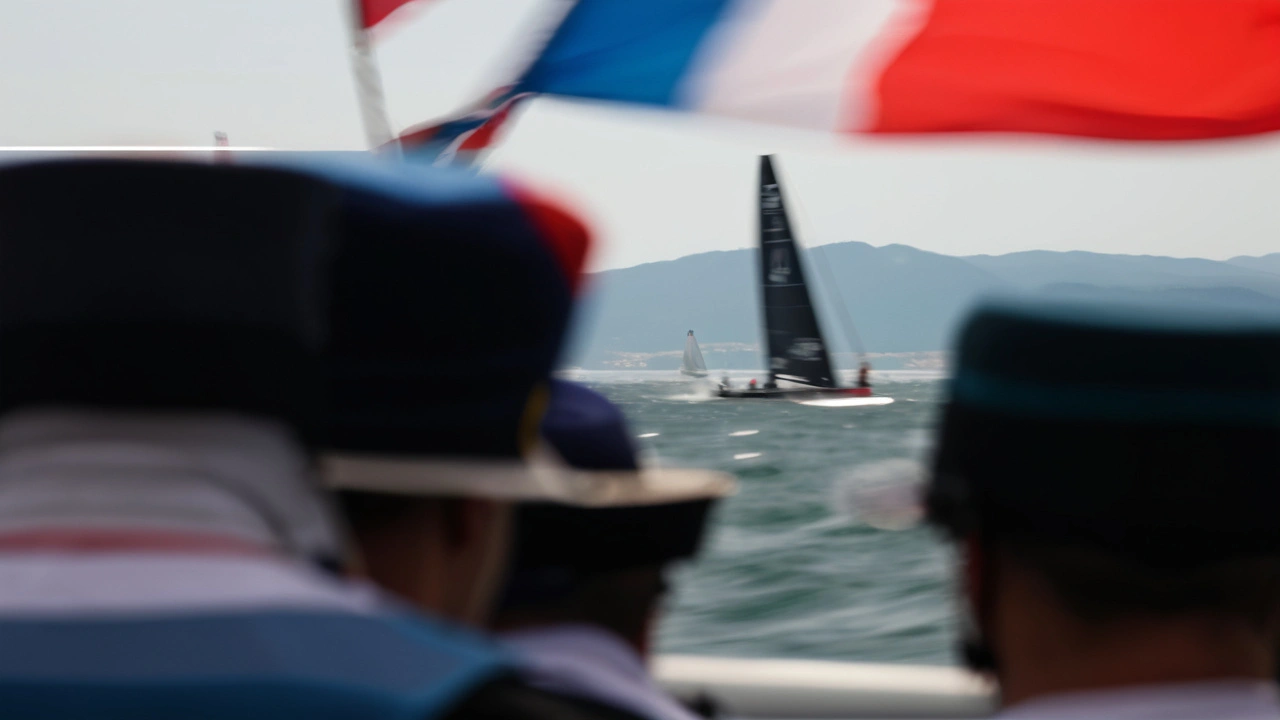Introduction to Olympic Sailing
The Olympics hold a special place in the hearts of sports fans worldwide. With a wide range of events, from the hundred-meter dash to gymnastics, there's something for everyone. However, some sports, like Olympic sailing, can seem elusive to new viewers. This guide aims to demystify the sport by sharing essential lessons, so you can fully appreciate the skill and strategy involved.
Lesson 1: Understanding the Start of a Race
Watching a sailing race for the first time can be confusing, particularly during the starting sequence. Sailors begin with a 5-minute countdown where they maneuver their boats for optimal positioning. The startline, often set perpendicular to the wind, plays a crucial role here. It has two reference points: the 'pin end' and the 'committee boat end.'
Unlike boats that can sail directly towards their targets, sailboats need to zig-zag, or “tack,” when moving towards their objectives. This strategy requires participants to be agile and precise in their movements. The configuration of the startline can also favor one side over the other, influencing the sailors’ strategies right from the get-go.
Lesson 2: The Wind and Its Impact
Wind conditions are critical in sailing. Races can be delayed when the wind is either too light or too strong. Ideal wind speeds for different boat types vary, but generally, winds below 5 knots are too light, and anything above 30 knots might be too fierce for safe competition. Constant shifts in wind direction can further complicate matters, prompting organizers to postpone events until conditions stabilize.
Lesson 3: The Role of the Spinnaker
A key element that adds color and flair to sailing is the spinnaker. This large, colorful sail is often hoisted during downwind legs of the race, catching more wind and boosting speed. It appears and disappears depending on the wind direction and boat type. Boats like the 49er and 49erFX frequently use spinnakers, making them exciting to watch.
Lesson 4: Tactics and Strategy
Success in Olympic sailing isn’t just about raw speed; it’s a blend of tactics, strategy, and decision-making. The best sailors are experts at reading the wind, identifying shifts, and making snap decisions. They must also be keenly aware of their competitors, knowing when to cover them or break away to gain an advantage.
Lesson 5: Different Boat Classes
Olympic sailing features a variety of boat classes, each with its own set of characteristics. Boats like the Laser and Finn are single-handed, requiring a high degree of individual skill and stamina. In contrast, boats like the 470 and 49er involve teamwork, with roles divided between the skipper and crew. Understanding these dynamics can deepen your appreciation of the sport.
Lesson 6: Course Layouts
Sailing courses vary, with marks or buoys defining the route. Typically, these courses include windward, leeward, and reaching legs. Each leg requires different sailing techniques and strategies. Sailors must navigate efficiently around these marks, making tactical decisions that can significantly affect their race position.
Lesson 7: Penalties and Rules
Like any competitive sport, sailing has a set of rules that competitors must follow. Violations, such as false starts or right-of-way infringements, incur penalties. These penalties usually require the sailor to perform a 360 or 720-degree turn, costing valuable time and positions. Knowing these rules gives viewers a better understanding of the action and drama unfolding on the water.
Lesson 8: The Importance of Physical Fitness
While it might seem that the wind does all the work, sailing is physically demanding. Sailors need strength, endurance, and flexibility to manage their boats effectively. They often hike out, leaning back over the side of the boat to counterbalance the wind's force on the sails. This technique requires considerable core and leg strength, making physical fitness a critical component of success.

Conclusion
Olympic sailing is a thrilling and intricate sport combining skill, strategy, and endurance. By understanding these key elements, new spectators can gain a deeper appreciation of the races. Whether it’s the strategic positioning at the start, the complex relationship with wind conditions, or the colorful spectacle of the spinnaker, there’s plenty to captivate and enthrall. So, next time you catch an Olympic sailing event, you’ll be well-equipped to enjoy and understand the fascinating world of this high-stakes sport. Happy watching!


cimberleigh pheasey
August 3, 2024 AT 16:09Also, the spinnaker looks like a giant party balloon on water. Why is it so colorful? Someone tell me it’s for morale.
Tom Gin
August 3, 2024 AT 23:22And we call this a sport? I thought the Olympics was for people who don’t need a nap after 10 minutes of walking.
Alex Alevy
August 4, 2024 AT 07:16Also, if you’ve never seen a 49er in 15-knot winds with a full spinnaker, you’re missing one of the most beautiful things in sports. It’s like watching a dolphin on steroids.
Danica Tamura
August 4, 2024 AT 22:20William H
August 5, 2024 AT 07:48Why do you think the same three nations always medal? Coincidence? Or is it the wind… controlled?
Katelyn Tamilio
August 5, 2024 AT 12:34Just think of it like a dance on water. The wind is the music, the boat is your partner, and the spinnaker? That’s the glittery dress.
Don’t stress the rules or the tactics-just enjoy the beauty. And if you’re new, just watch the spinnaker pop up. It’s magic. 🌬️⛵🌈
Michael Klamm
August 6, 2024 AT 05:26Shirley Kaufman
August 6, 2024 AT 12:39And don’t sleep on the physical side-those sailors aren’t just ‘leaning back.’ They’re holding their body weight out over the water for minutes at a time, muscles burning, heart pounding. It’s like rock climbing… while standing on a seesaw.
You don’t need to know every rule to love it. Just watch how they move. It’s poetry.
christian lassen
August 6, 2024 AT 22:01